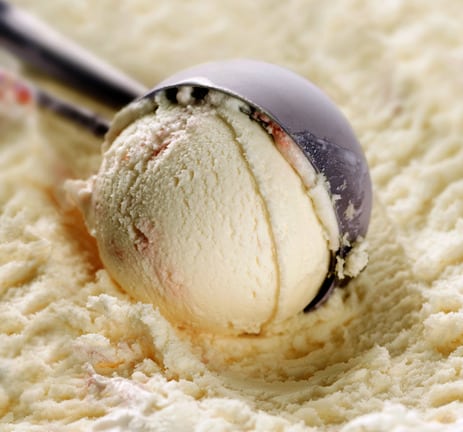
Robyn Flipse, MS. MA, RDN
Consultant to the Calorie Control Council
Those of us who live where there are four seasons throughout the year associate certain foods with certain seasons. A perfect example is eating frozen desserts, like ice cream, in the hot days of summer. But even if the temperature never gets too high where you live, frozen sweet treats are enjoyed any time of year all around the world.
What Makes Frozen Desserts Taste So Good?
Whether licked off a cone or spoon, the creamy consistency of frozen desserts makes them special. Their creaminess can come from dairy ingredients, like milk and cream, or from dairy substitutes, like soy, rice and coconut milks. Those without milk products may rely on bananas, fruit purees or avocado to give them a smooth texture. To prevent the formation of large ice crystals during the freezing process you may see plant-based stabilizers, such as guar gum, locust bean gum and carrageenan on the ingredient list.
The endless flavor combinations of frozen desserts means there’s one to satisfy every taste preference. Vanilla holds first place as the preferred flavor in the U.S., while Whiskey Prune ice cream is popular in Australia. If you need more choices there is a shop in Venezuela that holds the Guinness Book of Records standard for the largest selection of ice cream flavors in the world, including Spaghetti and Meatballs ice cream!
The one ingredient that all frozen desserts contain is some type of sweetener. Cane or beet sugar is the most common, but honey and agave syrup are also used. Many frozen treats also are made with sugar substitutes for consumers looking for a dessert with less added sugar, fewer calories, lower carbohydrate content or all three of those features.
It is important to keep in mind that when you see the claims “no added sugar,” “without added sugar,” and “no sugar added’ on a frozen dessert that does not mean there is no sugar in it. It means no sugar was added as a sweetener, but other ingredients may be a source of naturally occurring sugars, such as the lactose in milk and the fructose in strawberries. Sweet frozen treats with these claims often contain aspartame, sorbitol or other sugar substitutes to provide the desired sweetness.
Right next to the tubs of ice cream and sherbet in your grocer’s freezer are the frozen novelties. They are individually packaged, single serving frozen desserts, such as ice cream sandwiches, ice pops and filled cones. I still think of them as the items sold from the ice cream trucks that roamed my neighborhood on summer nights when I was a child. Just like the frozen desserts sold in family-sized containers, there are frozen novelties made with sugar substitutes.
If you want to make your own sweet frozen treats you’ll be happy to know you don’t need an ice cream machine for many recipes. These Cold and Creamy Fruit Cups are filled with the fruits of summer so a perfect way to celebrate National Ice Cream Month in July
 Robyn Flipse, MS, MA, RDN is a registered dietitian and cultural anthropologist whose 30+ year career includes maintaining a busy nutrition counseling practice, teaching food and nutrition courses at the university level, and authoring 2 popular diet books and numerous articles and blogs on health and fitness. Her ability to make sense out of confusing and sometimes controversial nutrition news has made her a frequent guest on major media outlets, including CNBC, FOX News and USA Today. Her passion is communicating practical nutrition information that empowers people to make the best food decisions they can in their everyday diets. Reach her on Twitter @EverydayRD and check out her blog The Everyday RD.
Robyn Flipse, MS, MA, RDN is a registered dietitian and cultural anthropologist whose 30+ year career includes maintaining a busy nutrition counseling practice, teaching food and nutrition courses at the university level, and authoring 2 popular diet books and numerous articles and blogs on health and fitness. Her ability to make sense out of confusing and sometimes controversial nutrition news has made her a frequent guest on major media outlets, including CNBC, FOX News and USA Today. Her passion is communicating practical nutrition information that empowers people to make the best food decisions they can in their everyday diets. Reach her on Twitter @EverydayRD and check out her blog The Everyday RD.




